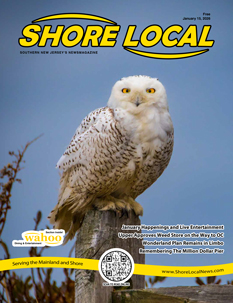Drink Up!
By David Setley
It’s week three of our Summer Wine Tour of Italy. The last two weeks’ articles explored the northern regions of Piemonte, Alto Adige, and Veneto. This week we are heading south to the central section of the country to investigate the land of Sangiovese, the regions of Chianti, Montepulciano, and Montalcino, as well as San Gimignano and Abruzzo. Let’s start in the heart of Tuscany, in the wine region of Chianti and the home of Sangiovese.
According to legend, Sangue di Giove, translated to “the blood of Jupiter,” was the original name for the Sangiovese grape. It is the most cultivated grape in Italy — in fact, 98% of Sangiovese comes from Italy — with the overwhelming majority of it grown in Tuscany. Interestingly, the soil there is awful. I’m talking sandy, rocky soil composed of clay and limestone that is terrible for most crops, yet is somehow excellent for the Sangiovese grape. Winemakers often say vines that struggle the most produce the best wine; that must be the case for Sangiovese! The Mediterranean climate there features warm days and cool nights, yielding light rain in early spring and late fall but little to none in summer. Yet, the gentle hillsides of Tuscany create a perfect terrain, and the sunny summer days allow for a relatively long growing season. Add to that over 3,000 years of winemaking tradition, and you can see how Sangiovese has become the soul of the wines from this region.
Fans of Italian wine are likely familiar with the Chianti and Chianti Classico varietals, but may not have known that the primary grape within them is Sangiovese. Chianti and Chianti Classico are subregions of Tuscany, or DOCs (Denominazione di Origine Controllata). For a wine from this region to have the name “Chianti” on the label, the grapes used must be grown in the DOC and must be 70% Sangiovese grapes. To be a higher-valued Chianti Classico wine, the grapes must be grown in that much smaller DOC and must be made from at least 80% Sangiovese. Additionally, the growing, harvesting, wine-making, and aging traditions of these regions must be certified.
A wonderful example of a Chianti is the Renzo Masi-Chianti Rufina Riserva. This medium-bodied red wine features notes of tobacco, cherry, cedar, spice, and almonds that are classically found in great wines from the region. For an excellent, yet reasonably priced Chianti Classico, reach for the Castello di Volpaia-Chianti Classico. The elevation of the Volpaia Vineyards is slightly higher than many of the others in the DOC, resulting in a higher acidity level. That acidity manifests as a freshness in the wine that, along with the classic flavors of red fruit, tobacco, spice, and balsamic notes, gives this wine a notable boldness for a medium-bodied wine and an intense ruby red color.
Now let’s talk Montepulcianos. There is the Vino Nobile di Montepulciano from the town in Tuscany that bears the same name, and there is its cousin, Montepulciano d’Abruzzo, from the central Italy province of Abruzzo to the east. The Vino Nobile is made from Sangiovese, while the Montepulciano di Abruzzo is made from the thicker-skinned Montepulciano grape. Like Chianti DOC wines, the Vino Nobile must have a minimum of 70% Sangiovese. However, this DOC requires a minimum of 2 years of aging prior to sale, with at least 1 of those years in oak barrels. For an excellent example, try the Dei – Vino Nobile di Montepulciano 2019. This vibrant wine has bright acidity and gentle tannins with aromas of ripe red fruit and spice, and flavors of dark ripe berries, notes of plum, and hints of earthiness from the extended aging.
The Montepulciano d’Abruzzo wines are not Sangiovese-based, but rather are produced from the Montepulciano grape. The most popular Montepulciano di Abruzzo is Cantina Zaccagnini-Tralcetto Montepulciano, a.k.a “the stick wine,” named for the small piece of vine that is attached to each bottle. Feudi del Duca-Montepulciano d’Abruzzo and Allumea-Rosso Terre Di Chieti 2021 are also both excellent and very reasonably priced options. These wines are easy to drink with smooth tannins, ruby red color, and the flavors of ripe red plum and dark fruit. Either are perfect for traditional Italian foods as well as grilled meats and vegetables.
Perhaps the most valued wines of Tuscany are Brunello di Montalcino wines. This DOC requires that the wine be made with 100% Sangiovese grapes grown within this subregion. Many consider this to be Sangiovese at its finest. In addition to the concentration of Sangiovese, the wine must be aged for at least 5 years (or 6, for Riserva), with a minimum of 2 years in oak barrels to be certified as a Brunello di Montalcino DOC wine. Many of these wines lean toward pricey, but the Castelli Martinozzi or the Ciacci Piccolomini d’Aragona are both reasonably priced. Each embodies the classic characteristics that make these wines so regarded: intensive and elegant aromas with floral and mushroom notes, pleasantly tannic mouthfeels, and a lingering palate of dried flowers and wild berry fruit.
For white wine lovers, our tour is next going to the amazingly beautiful, medieval town of San Gimignano, near Siena. My wife, Gwen, and I spent a lovely afternoon enjoying wine at a local wine shop in town. The wine this region is most known for is Vernaccia. The wine produced from this grape is elegant, delicious, crisp, and medium-bodied with stone mineral, floral, grapefruit, and lemon zest notes. My recommendation is the Mormoraia ‘Suavis’ Vernaccia di San Gimignano 2021. Family-owned, Mormoraia is one of the most respected producers of this varietal in the region. Their wine is certified organic and is sure to please.
I hope you enjoyed week three of our Italian Wine Tour. If the history and wines of Italy interest you, visit our events tab on passionvines.com to learn about our three-week Wine Foundations: Italy class in September. As always, contact me with any questions at dsetley@passionvines.com, or stop in the store. Until next time, Happy Wining!








